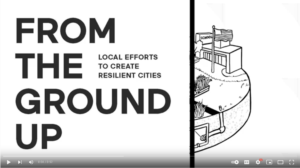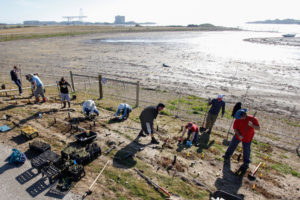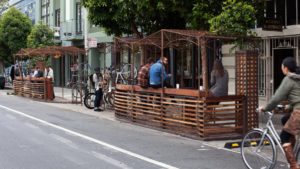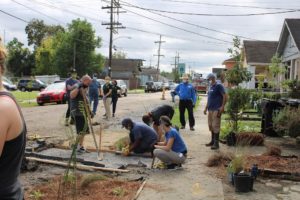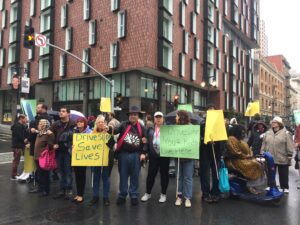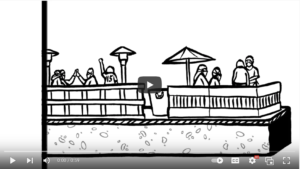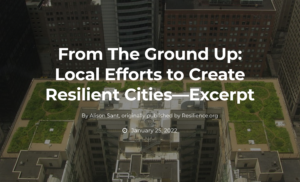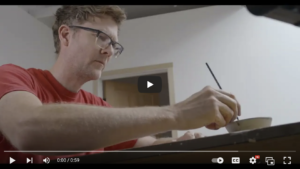Since 2009, Philadelphia has combined its commitment to making green spaces accessible to all its residents with a stormwater management approach that prioritizes green infrastructure. It set the ambitious goal to green a third of the existing impervious landscape within the city including schoolyards, vacant lots, and parks. This video animates of Packard Jennings illustration of Philadelphia’s pie-chart breakdown of…
In the early 2000s, Portland began one of the country’s first green infrastructure programs. For decades, Portland has been working to mitigate its combined sewer overflow events by improving the ecological function and health of its watersheds, conserving natural areas, and making room for flooding. Among these watershed-wide projects is the Tabor to the River program. The project piloted nature-based…
March 16, 2022 // Cities are experimenting with ways of reintroducing nature to be resilient to the rising tides, floods, and extreme weather events caused by climate change. Along urban coastlines, restored wetlands, constructed oyster reefs, and ecotone levees provide critical habitat for birds, bivalves and other species–while buffering severe storms. In urban watersheds, expanding the floodplains of creeks, streams…
By Alison Sant // What began in 2005 as Park(ing) Day evolved into part of a global movement for transforming city streets. In 2005, a San Francisco collective of artists and designers called Rebar ignited a global street intervention, which later became …
While cities are cluing in to the power of collaboration to fight climate change, much of the transformative action seen today is originating at the community and grassroots level. How can all segments of society work together towards this common goal–since climate change should matter to all of us? This week, we’re joined by Alison Sant, Co-Founder of Studio for…
Alison Sant laid the foundation for her book with a simple premise, – best resiliency practices come from the communities that are on the front lines. After more than ninety interviews with community activists, city officials, scientists and urban designers across the country Sant’s book is finally complete. It is available online, will be hitting the bookstores in February and…
February 10, 2022 // From parklets and quick-build projects to its recent Slow Streets initiative, San Francisco has been a leader in experimenting with remaking its streetscapes. However, these programs and their benefits are often unequally distributed. One such example is the Tenderloin, which had fewer public street amenities than most other neighborhoods before the pandemic and was one of…
San Francisco has a long history of creating tactical experiments to reclaim its city streets. These efforts began with Bonnie Ora Sherk’s portable parks in the 1970s, exploded with the creation of the first Park(ing) Day by the design collective Rebar in 2005, and seeded the city’s Parklet and Shared Spaces programs today. Reclaiming city streets is a critical part…
By Alison Sant // For more than three decades, US cities have experimented with ways to remake themselves in response to climate change. From tactical interventions and urban prototypes to pilot projects, streets have been reconfigured to accommodate people, bikes, and transit. Roads, parks, and backyards have been made absorbent. Forest canopies have been broadened and urban waters restored. These…
Time-lapse of Packard Jennings doing an illustration for Alison Sant’s book ‘From The Ground Up,’ published by Island Press, 2022.
